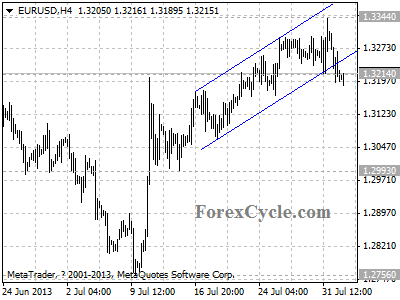By WallStreetDaily.com
It’s Friday in the Wall Street Daily Nation. That means it’s time for some charts.
And it’s also time for “just a bit of a break from the norm / just a little somethin’ to break the monotony,” as D.J. Jazzy Jeff and The Fresh Prince famously put it.
Let me explain…
A New Kind of Bragging Right
Most analysts in the blogosphere and newsletter industry happily (and all too frequently) tout their winners. And only their winners.
Their marketing departments love to engage in the same chest-thumping exercise, too. It’s what sells subscriptions, after all.
Don’t act shocked. The average investor (i.e. – you) is exactly the same way. Do you ever go to dinner parties and share the worst investment you ever made? My point exactly. It’s just the winners that get acknowledged.
Well, last night I received my July issue of Mossberg’s Investor Digest. And right there on pg. 2 were all the goods. It broke down the performance of every single investment idea that Editor Dave Mossberg shared over the past 12 months or so. The good, the bad and the ugly. (FYI – There’s only one ugly pick on his list, which is why I’m a loyal subscriber.)
It got me thinking, too.
Yesterday, I bragged a little too much about being one of the first to bet on Europe. I’ve done the same thing with my calls on Japan and U.S. real estate, too. Collectively, the bragging paints a picture that I think I’m so smart.
But I’m not.
To prove it, I want to share three charts that demonstrate my lack of brilliance, what I’ve learned from the mistakes – and, most importantly, what you need to do to protect yourself from my occasional bouts of suckiness…
Print is Dead! Or Not
Back in February, I boldly proclaimed that print media was on its deathbed. Since then, the evidence in support of my viewpoint continues to pile up. Like when PC World magazine decided in July to join the likes of Newsweek and go all-digital.
Despite the obvious signs of a terminal decline, shares of the two print media dinosaurs that I told you to bet against – The New York Times Company (NYT) and Gannett Co., Inc. (GCI) – keep defying gravity.
Each stock is up about 40% year-to-date, more than doubling the return of the S&P 500 Index. Death never looked so good. Especially when you consider that “death” actually occurred all the way back in 2002, when NYT shares topped at $51.
Let’s give the CEO major props for resurrecting the company.

Lesson: When we sell a stock short based on the impending obsolescence of the company’s products, we need to be committed. I’m taking about “until death do us part” commitment. Or we shouldn’t bother. Because no matter how sickly the company, it could take a while before share prices finally kick the bucket.
The Wrong Way to Play the Natural Gas Boom
Last February, I teased you with a killer “pick and shovel” company in the fracking services space that I had just recommended to WSD Insider subscribers. It was a company that was growing sales and earnings at an insanely fast clip. And it paid about a 10% dividend, too.
How could you resist? Be glad that you did.
In August 2012, I finally caved and shared the identity of the company with you: Poseidon Corp. (PSN.TO). And it ended up being a killer idea, all right. A wealth killer, that is.
After reporting an unexpected 45% drop in profits, shares plummeted 62% in a single day. Now the company is defunct, after a special committee found egregious accounting errors (i.e. – fraud).

Lesson: When the growth appears too good to be true – and management keeps making boasts like “our addressable market keeps getting larger [and we’re a rare], growth-oriented, yield investment” – run for cover. Because it is too good to be true.
The Sun Will Come Out Tomorrow
After correctly panning Zynga (ZNGA), Groupon (GRPN) and Facebook (FB) before their historic IPO flops, I tried my hand at predicting the ultimate fate of SolarCity’s (SCTY) IPO.
I dedicated two entire columns (see here and here) to tearing apart its business model, too. Boy, do I wish I spent my time doing something else.

The stock is up 250% (and counting).
Lesson: When it comes to evaluating renewable energy investments, I can’t underestimate consumers’ unwavering commitment to “go green.” It’s a powerful force, sometimes more powerful than economics.
The Best Defense Against Bad Advice
Full disclosure is always the best policy. And with that in mind, please know that I get it way wrong sometimes.
Let that be a friendly reminder, though, that we need to put safeguards in place to protect against my bad calls blowing us all up. Specifically, trailing-stop and position-sizing disciplines.
Now, if you choose to ignore that advice – and blindly follow my lead – well, you get to share in the blame for the impact of any bad recommendations. Trust me, it’s much more therapeutic when you get to blame me for everything.
Speaking of which, feel free to sound off on any of my bad calls – or any of our work here at Wall Street Daily – by dropping us an email here.
That’s it for this week. On Monday, I’m back to uncovering profitable recommendations for you. Count on it.
Louis Basenese
The post Charting My Three Worst Recommendations of the Last Year appeared first on | Wall Street Daily.
Article By WallStreetDaily.com
Original Article: Charting My Three Worst Recommendations of the Last Year






